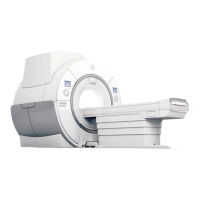2.3 Data Collection
2.3.1 Ambient Baseline Condition
1. All of the measurements listed above must be made in a “quiet” environment--i.e., areas
where excessive traffic, subway trains, etc. do not exist. A vibration measurement must also
be made during periods without traffic or during periods of light traffic. Measurements must
define the lowest levels of vibration possible at the site.
2. The source of any steady state vibration, whose level exceeds the magnet specifications
found in Magnet Room Structural Requirements, must be identified. A second measurement
should be made with all of the identified contributors powered down if possible. In situations
where it is not possible to power down equipment, vibration data must be collected to
identify the specific source of the vibration concern. The majority of steady state vibration
problems can be negated by isolating the vibration source.
2.3.2 Normal Condition
1. All of the vibration measurements listed above must be repeated during periods of “normal”
environmental conditions, including the FFTs and time histories. The transient
measurements must be provided to define the dynamic disturbances the MR system may be
exposed to. Transient analysis is required for a true assessment of the site
2. Special attention must be paid to the site assessment during the entire analysis. Since
transient vibration is not easily addressed once the MR suite is fully constructed, the test
consultant must fully understand the needs for this analysis. The source of any transient
vibration must be identified and supported with vibration plots. If the source of any transient
vibration is not locatable, it is recommended that the customer have an alternate location
identified and the vibration studied
3.
Transient vibration can be difficult to assess if the details are not understood. The 0.0005g,
zero-to-peak trigger level is a starting point to understanding the vibration stability. The
transient vibration peak amplitude, structural (time variant) response, decay rate and an
estimate of the number of events per unit of time would constitute a complete transient
analysis. All transient failures must be supported by time history plots. The plots must clearly
show the structural response, the frequency of the signature and the decay rate. From this
data, GE Heatlhcare can help determine compliance with the vibration guidelines
4. The test consultant must provide site data to show the design recommendations for all sites/
building structures meet the Magnet specifications found in Magnet Room Structural
Requirements
2.4 Presentation/Interpretation of Results
1. The recommended format for site vibration data collection, presentation, and analysis is
demonstrated in the examples in Illustration 7-1, , Illustration 7-3, and Illustration 7-4.
Presentation of the data in any other format (linear units only) may result in incorrect
interpretation and diagnosis of the site. Additional data collection or presentation methods
are at the option of the vibration testing service
2.
All plots must be properly annotated with:
a.
Instrumentation setup including number of averages, frequency resolution, etc.
SIGNA Voyager Pre-Installation
Direction 5680008–1EN, Revision 2
Chapter 7 Appendix 151

